Cattle Restoration Project
The heifer stock at
the beginning of the year was twenty. One heifer
belonging to Conard died because it ate a
plastic carrier bag. Lackson Kapaso sold his
heifer because it developed sores on its feet
which left it lame. Another heifer belonging to
Willard died of what we would term a natural
cause. Mr. Philemon Mafhosla sold two male
animals and used the proceeds to buy a scotch
cart.
Out of the original twenty two
heifers donated to this project, the heifer
population at the end June 2007 stood at
seventeen. Over a period of six years,
five have died. in our reckoning, the
mortality figure is four. If a heifer eats a
plastic and dies, this is an accident rather
than mortality.
This mortality rate is by far better than
the area average.
At the end of 2006, we reported that we planned to sell the two bulls to avoid in breading. This we did. We bought one bull and we are in the market for the second one. From the increase in the cattle population, we are convinced that, the bulls were a good investment.
In total we have
passed on ten heifers to five families. We
repossessed two heifers that we had allocated to
Jonathan Ndiya. This man deserted both his
family and the heifers. We understand that he no
lives somewhere in Monze, the southern
LifeNets continues to provide training and veterinary support to the project.
Some of the male calves (no longer calves) worked for the second year running. Significant increase in maize production was reported from marginal families – that of Willard Katapya and Armstrong Maninga. Both families credit the increase to the young oxen that have now been yoked for the second year running.
Milk production remains steady. Milk provides the much needed protein. Milk that is excess to family needs is sold, proceeds from the sales are used to buy things like salt, cooking oil bath soap pencils, books etc. As reported under the health support, there is a steady decline in illness among our members. This because of the integrated approach embraced by LifeNets tries to address all the challenges that face this community.
Crop Financing
Once again, using the funds repaid by farmers, and an additional funding of US$ 3,000 from LifeNets International, we increased the number of farmers that we finance from 10 to 14 families; an increase of 40% over last year.
We again undertook three trips to supervise the project and ensure that participants, especially the four new entrants, adhered to set cultural practices. We are glad to report that the concept running a farm as business is now taking root.
The preliminary yields from our top three farmers give an indication that this season will be better than last year. When the harvest is finished, we will submit a more detailed report
Crop Marketing
The government, under pressure from the donor community, increased the producer price of maize to US$ 165 per ton and brought the buying depots closer to the production areas. This is a very welcome development. The maize purchases will be used to build the nation’s strategic grain reserve.
This concept was abandoned during the
years when
If this marketing arrangements works, it will help us in two ways. There will no need to go through the hustle of storing maize while we wait for prices to go up. We will save on handling and transportation costs.
Under the new marketing arrangement, the official marketing season began in June 1, 2007. At the beginning of June, grain moisture content is at a level where further weight loss due to evaporation of moisture is negligible. This may good for the buyers but the practice causes severe cash flow problems for peasant farmers.
Because of severe cash flow problems, farmers are forced to sell their crops as soon as the maize is ready. This lag between the time the grain is ready and when the Government open their markets is what gives the brief case business man an opportunity to ply their exploitative trade.
This where even under the new marketing regime; the crop pre financing component of this project is still invaluable. The advances that farmers received from LifeNets are being used to finance living expenses while they wait for the new maize marketing arrangements takes effect.
Generally, the season was very good and we do not expect anyone to default on their loans
Health Support
The pressure on this donation has increased. We now share it between the Nalubanda, Kasumpa and Mapoko – a new area that we have started working in
A new feature to the health support was that we received and distributed treated mosquito nets worth US$ 1,500 in the three areas that we work. Since the treated nets were distributed, the incidence of malaria has dropped dramatically. We find more and more of our people do not need the treatment.
The beneficiaries of Fansidar, the malaria treatment drug, are now the community. Prevention is always better than cure, we feel that this was very thoughtful of the donor and we ask that you please thank her for this fore sight.
Talking about prevention, we have over the years taught that members should produce children that that they can support. In the year under review, out all the families that should not have babies; only one family had a baby. Attitudes and values are indeed changing. It is now becoming accepted, albeit slowly, that those women who do not produce babies every 15 months are healthier and work harder than their counter parts.
We are happy to report that the wheel chair and crutches donated to Mary Chisevente; a lady who was crippled from a time she was still a very small girl, are in good working condition. She attends church in Mapoko. She comments that this is one of; if not the most, valuable gift she has ever received in her life.
Wells We are happy to report that all the three wells are now complete and in perfect working condition. All in all about a total of 25 families with their animals benefit from clean and safe drinking water through out the year.
A request was made for a well on a homestead that would cost $7000, but we cannot afford a project of this proportion at this time.
Scotch carts
Four families purchased scotch carts in the eleven months ending 30 June, 2007. Add to the two families that already own scotch carts, brings the number of scotch carts to six. This is unprecedented level of ownership in this community. This is another clear testimony that our programs do not only teach character, but they create wealth.
Transport
The Truck and trailer donated by LifeNets has worked for us for about a year. Together, they have helped the members of the church in more ways than one. The service they render has exceeded our wildest expectation.
As we talk now, the truck and trailer is busy hauling maize produce for this season. Without the help of the truck it would not be possible to complete the three church buildings we are constructing. We cannot imagine how would manage to organize the feast without the truck and trailer. The song is endless.
This is one of the most valuable social investment LifeNets has made.
Scholarships
LifeNets funded two scholarships in the year under review. Two young men, Bevin Momba and sylvster Ndiya benefited. Bevin is studying Insurance; he passed his certificate course and is now reading for the diploma. Sylvester is studying Information Technology. He has written his certificate course and waiting for results to be published.
The two scholarships cost US $4,000. There are two especially promising boy and girl named Gideon and Zere. They both should go university in 2008 but funds will be constraint. We request that you consider, funds permitting, to offer them scholarships in the coming year. Nothing has been promised to them.
While on the subject of education, six teenagers of this number three are girls – attend secondary school and the bills are paid for by their parents. These children’s case contracts very sharply with that of the Bevin and Sylvester.
LifeNets paid school fees for Bevin and Sylvester, this time round, the parents are paying. This shows that, not only are attitudes and values changing but incomes increased to a point where parents are able to invest in their children education. We again have to thank LifeNets for the work that that they do in these areas
Store Room We are happy to report that the store room and three rooms are now complete. This is a very valuable project; it saves LifeNets and the church lots of money.
The third room was done to a fairly high standard. It has a bathtub, shower and a toilet. It also has a desk to work from. It reserved for Mr. Van Belkum. We estimate that in two or three years; this project will yield enough returns to LifeNets and the Church, to cover the cost of the initial investment.
New Project – Mapoko
LifeNets Australia offered us US $4,000 [THIS HAS ALREADY BEEN DONE] if we could propose a project which would satisfy the criteria set by the donor. We suggested to LifeNets Australia that we start a similar project to the one we run in Nalubanda and Kasumpa. This will be an integrated project comprising of animals, crops and a health support component.
We will start by training all the families but we will only include five most promising families on the pilot project.
Conclusion 1) Animal population has increased significantly. 2) All the house holds, for the first time this year, will experience food security. 3) We are for the first time seeing evidence of savings, witnessed by purchase of scotch carts and investment in children education 4) The birth rate has reduced from 50% to 5%, we have a heath membership and child mortality is nil
In our opinion, we are witnessing on a small scale a society that is a transforming its values recording sustainable and verifiable gains in all areas of human endeavor. Funding plus character training pays big makes poverty reduction a reality and LifeNets is showing the way where many and powerful NGOs have drawn a blank
|
||||||
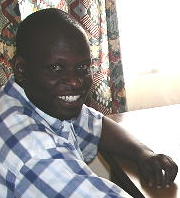
 LifeNets in Zambia
LifeNets in Zambia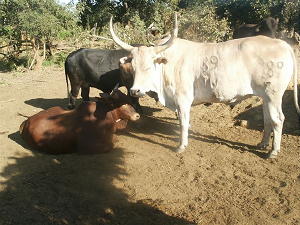
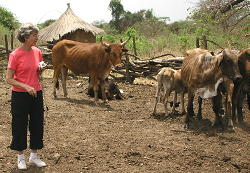
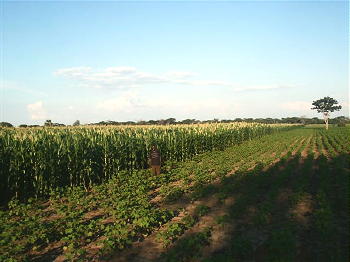
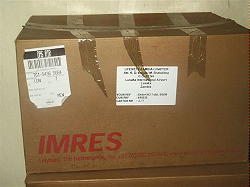
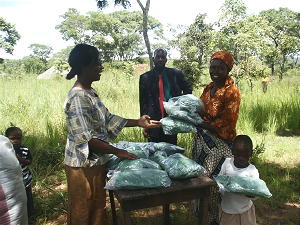

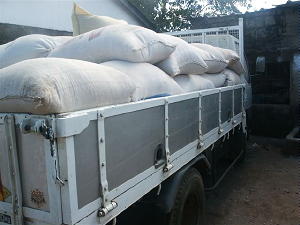
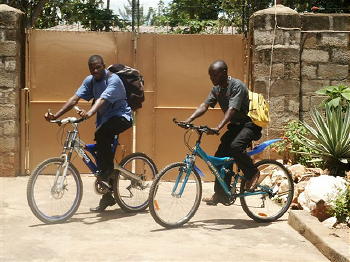
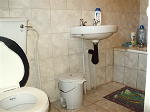 The garage
is used for services during Holydays and bible
studies during the week when
The garage
is used for services during Holydays and bible
studies during the week when
 we cannot get
access to our regular hall. The two rooms are
complete with hot and cold shower, two toilets
one for gents and one for ladies. The rooms are
used by members who visit
we cannot get
access to our regular hall. The two rooms are
complete with hot and cold shower, two toilets
one for gents and one for ladies. The rooms are
used by members who visit